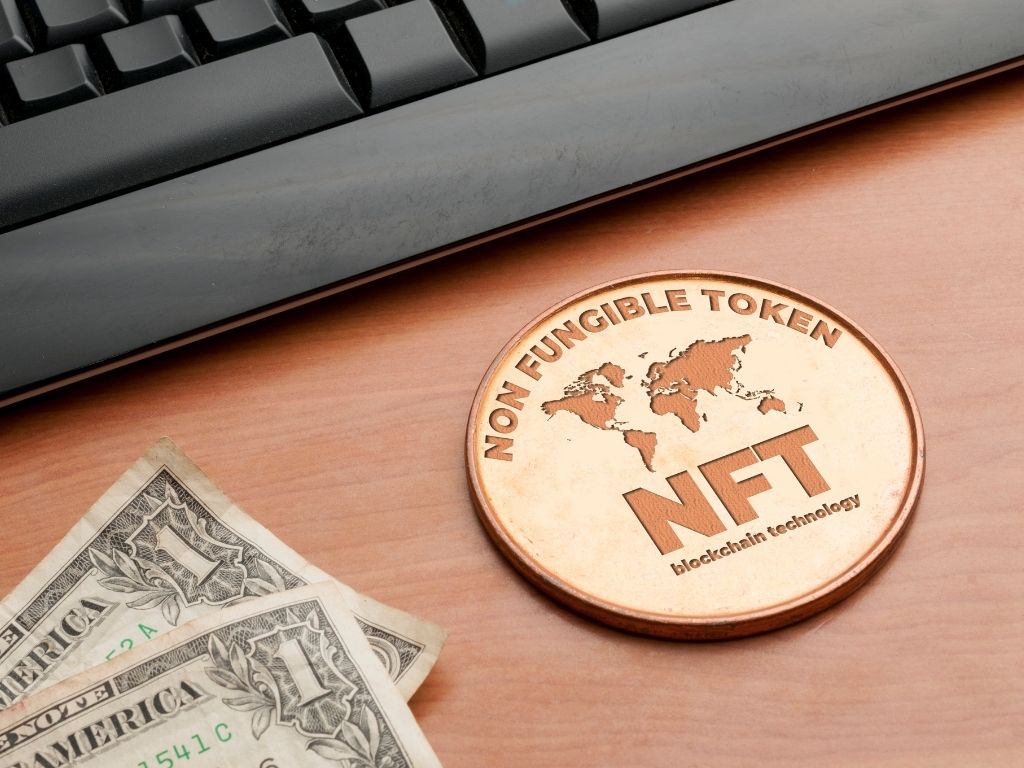Top 10 Ways NFT Marketing Is Emerging With Innovative Trends In 2024
NFT marketing refers to the use of non-fungible tokens (NFTs) as a tool for promoting brands, products, services, and content. NFTs are unique digital assets stored on blockchain networks that represent ownership or proof of authenticity of a specific item or piece of content, such as digital art, music, videos, collectibles, or virtual real estate.
In the context of marketing, NFTs offer several advantages. Firstly, they provide a novel and innovative way for brands to engage with their audience by offering exclusive or limited-edition NFTs as promotional incentives or rewards. These NFTs can serve as tokens of appreciation for loyal customers or as collectible items that create a sense of exclusivity and scarcity, driving demand and engagement.
Additionally, NFTs can be leveraged to showcase and monetize digital content created by brands, such as artwork, music, or branded virtual items. By tokenizing their digital assets as NFTs, brands can establish ownership rights, authenticate the originality of their content, and create new revenue streams through sales, auctions, or royalties.
NFT marketing also offers opportunities for brands to collaborate with artists, influencers, and creators to co-create and promote branded NFT collections. These collaborations can help brands tap into new audiences, leverage the credibility and reach of influencers, and foster creative partnerships that generate buzz and excitement around their products or services.
NFTs enable brands to experiment with immersive storytelling and interactive experiences, leveraging blockchain technology to create engaging narratives and virtual worlds that captivate and resonate with their audience.
NFT marketing represents a dynamic and evolving frontier in digital marketing, offering brands innovative ways to connect with consumers, monetize digital assets, and differentiate themselves in an increasingly competitive landscape. As the NFT ecosystem continues to mature, brands that embrace this technology stand to benefit from its potential to drive engagement, revenue, and brand loyalty in the digital age.
Also, read- Step Into the Next-Gen NFT Trading With NFTFN’s Perp-DEX Presale
10 importance of NFT marketing
- Authenticity and Ownership: NFT marketing allows brands to tokenize their digital assets, providing proof of authenticity and ownership, which can enhance consumer trust and confidence.
- Scarcity and Exclusivity: By creating limited-edition NFTs, brands can generate a sense of scarcity and exclusivity, driving demand and engagement among consumers.
- Monetization Opportunities: NFT marketing enables brands to monetize their digital content by selling or auctioning NFTs, creating new revenue streams beyond traditional advertising and product sales.
- Brand Differentiation: Embracing NFT marketing can help brands differentiate themselves in a crowded marketplace by leveraging innovative and cutting-edge technology to engage with consumers in unique ways.
- Community Engagement: Brands can use NFTs as a tool to engage with their community of fans and followers, offering exclusive rewards, incentives, or experiences that foster deeper connections and loyalty.
- Collaborations and Partnerships: NFT marketing opens up opportunities for brands to collaborate with artists, influencers, and creators to co-create and promote branded NFT collections, expanding their reach and appeal to new audiences.
- Storytelling and Immersive Experiences: NFTs provide a platform for brands to tell compelling stories and create immersive experiences that captivate and resonate with consumers, enhancing brand recall and emotional connection.
- Data and Insights: NFT marketing can provide valuable data and insights into consumer behavior, preferences, and engagement patterns, enabling brands to optimize their marketing strategies and campaigns effectively.
- Global Reach: With NFTs being digital assets, brands can reach audiences worldwide, breaking down geographical barriers and tapping into new markets and demographics.
- Future-proofing: Embracing NFT marketing positions brands at the forefront of technological innovation, future-proofing their marketing strategies and ensuring relevance in an increasingly digital and decentralized world.
Examples of NFT marketing
- Digital Art: Several artists and creators have leveraged NFTs to market and sell their digital artwork. For example, digital artist Beeple gained widespread attention for selling an NFT artwork titled “Everyday: The First 5000 Days” for a record-breaking $69.3 million at auction.
- Virtual Real Estate: Companies like Decentraland and The Sandbox have used NFTs to market virtual real estate within their metaverse platforms. Users can purchase NFTs representing parcels of virtual land, which they can develop, monetize, and trade within the virtual world.
- Music and Entertainment: Musicians and entertainers have begun using NFTs to market exclusive content, experiences, and collectibles to their fans. For instance, Kings of Leon released their latest album as an NFT, offering fans unique digital collectibles and perks.
- Sports Memorabilia: Professional sports leagues and teams have embraced NFTs as a way to market and sell digital collectibles and memorabilia. For example, the NBA has launched NBA Top Shot, a platform where fans can buy, sell, and trade NFTs representing memorable moments from NBA games.
- Brand Partnerships and Collaborations: Brands have collaborated with artists, influencers, and creators to launch branded NFT collections and experiences. For instance, Taco Bell partnered with digital artist Gisel Florez to create and sell NFT artwork inspired by its menu items, offering fans a unique and immersive way to engage with the brand.
People are always shocked I’ll hop on calls giving them marketing advice for ‘free’.
— camol (@camolNFT) March 21, 2024
Every time I’m shocked, like I want to see my friends win and I know I’m fairly decent at marketing cartoon jpgs.
Why have we gone so far as an industry that we can’t help each other out…
Top 10 ways NFT marketing is emerging with innovative trends and approaches in 2024
- Interactive NFT Experiences: NFT marketing is evolving with interactive experiences that allow consumers to engage with brands in immersive ways. Brands are creating interactive NFTs that offer gaming elements, virtual events, and augmented reality experiences, providing unique and memorable interactions for consumers.
- Metaverse Integration: NFT marketing is increasingly integrating with the metaverse, enabling brands to establish a presence in virtual worlds and engage with consumers in virtual environments. Brands are creating virtual stores, branded experiences, and digital events within the metaverse to reach and connect with audiences in new and innovative ways.
- Dynamic NFTs: Dynamic NFTs are emerging as a trend in NFT marketing, offering NFTs that can change or evolve over time based on external factors such as user interactions, environmental conditions, or real-world events. Dynamic NFTs provide a dynamic and ever-changing experience for consumers, keeping them engaged and excited.
- Personalized NFTs: Personalized NFTs are gaining popularity as a way for brands to offer customized and unique experiences to consumers. Brands are creating NFTs that are tailored to individual preferences, interests, and behaviors, providing a personalized touch that resonates with consumers on a deeper level.
- Social Media Integration: NFT marketing is leveraging social media platforms to reach and engage with audiences effectively. Brands are using social media to promote NFT drops, engage with consumers, and build communities around their NFT collections, driving awareness and engagement.
- Green NFTs: With growing concerns about the environmental impact of blockchain technology, green NFTs are emerging as a trend in NFT marketing. Brands are exploring sustainable blockchain solutions and carbon-neutral NFT platforms to minimize the environmental footprint of NFTs and appeal to eco-conscious consumers.
- NFT Marketplaces and Platforms: NFT marketing is benefiting from the proliferation of NFT marketplaces and platforms, providing brands with new avenues to showcase and sell their NFT collections. Brands are partnering with NFT marketplaces to launch exclusive drops, auctions, and collaborations, reaching a wider audience of collectors and enthusiasts.
- NFT Loyalty Programs: NFT marketing is innovating with loyalty programs that reward consumers with NFTs for their loyalty and engagement. Brands are launching NFT-based loyalty programs that offer exclusive NFT rewards, perks, and incentives to incentivize repeat purchases and brand advocacy.
- Charitable NFTs: Charitable NFTs are gaining traction as a way for brands to support social causes and give back to the community. Brands are creating NFTs with proceeds going to charitable organizations, raising awareness and funds for important causes while engaging consumers in meaningful ways.
- Blockchain Interoperability: Blockchain interoperability is enabling brands to explore cross-chain NFT marketing strategies, allowing NFTs to be seamlessly transferred and exchanged across different blockchain networks. Brands are leveraging blockchain interoperability to reach wider audiences and tap into new markets while maintaining interoperability and compatibility with existing NFT ecosystems.
NFT Marketing Beyond 2024: A Glimpse into the Evolving Landscape
The NFT (Non-Fungible Token) market has experienced explosive growth in recent years, and with 2024 behind us, we can expect even more innovative marketing strategies to emerge. Here’s a detailed exploration of what the future holds for NFT marketing:
Focus on Utility and Community Building:
-
Moving beyond hype: Gone are the days of relying solely on celebrity endorsements or limited-edition drops to generate interest. Successful NFT projects in the post-2024 era will prioritize offering real utility and value to their holders. This could take the form of exclusive access to events, discounts on merchandise, or even governance rights within a decentralized community.
-
Building strong communities: NFTs will become gateways to vibrant online communities. Marketers will need to cultivate these communities by fostering engagement, hosting interactive events within the metaverse, and creating a sense of shared purpose among NFT holders.
-
Storytelling and Experiential Marketing: NFTs will be used to create immersive experiences that go beyond simply owning a digital asset. Imagine attending a concert with your NFT serving as your virtual ticket, granting access to exclusive backstage content or VIP areas. Storytelling will play a crucial role in connecting with potential buyers on an emotional level.
Technological Advancements and Integration:
-
Metaverse Integration: The metaverse, a persistent virtual world, is poised for significant growth. NFTs will be instrumental in establishing ownership and identity within these virtual spaces. Imagine owning a virtual plot of land in the metaverse, represented by an NFT, that you can customize and monetize.
-
Cross-chain interoperability: Currently, NFTs often exist on specific blockchains, limiting their reach. As interoperability between blockchains improves, NFTs will become more portable, and marketing campaigns can target a wider audience across different platforms.
-
AI-powered personalization: Artificial intelligence (AI) will be leveraged to personalize NFT marketing campaigns. Imagine AI algorithms analyzing user behavior and preferences to recommend relevant NFT projects, creating a more targeted and effective marketing experience.
Evolving Regulatory Landscape:
-
Compliance and Security: As the NFT market matures, regulations will likely become more prominent. Marketers will need to stay updated on evolving regulations and ensure their campaigns comply with legal requirements. Security will also be a top priority, with marketing strategies emphasizing the secure storage and management of NFTs.
-
Sustainable Practices and Environmental Impact: The environmental impact of blockchain technology, upon which NFTs rely, is a growing concern. Marketers will need to highlight the sustainability efforts of NFT projects and explore ways to minimize their environmental footprint. This could involve promoting energy-efficient blockchains or partnering with organizations focused on sustainable solutions.
Examples of Innovative Marketing Strategies:
-
Interactive AR experiences: Imagine using augmented reality (AR) to showcase a collection of digital art before purchase. Potential buyers could see the artwork come to life in their living room through their smartphones, creating a more immersive and engaging experience.
-
Fractionalized ownership: Making expensive NFTs more accessible through fractional ownership could be a game-changer. Imagine a community co-owning a rare digital artwork, allowing more people to participate in the NFT market.
-
Gamified experiences: Integrating gamification elements into NFT marketing campaigns can boost engagement. Think about earning points or rewards for completing tasks related to the NFT project, fostering a sense of community and excitement.
The Future is Collaborative:
The future of NFT marketing will be a collaborative effort. Expect to see partnerships between established brands, innovative NFT projects, and tech companies. By combining their expertise and resources, they can create truly groundbreaking marketing campaigns that push the boundaries of what’s possible.
In conclusion, the NFT marketing landscape beyond 2024 is poised for exciting growth. By focusing on utility, community building, and leveraging technological advancements, marketers can create campaigns that not only generate interest but also foster long-term engagement and value for NFT holders. As the NFT space evolves, so too will the marketing strategies employed to reach and connect with potential buyers and collectors.
Stay informed with daily updates from Blockchain Magazine on Google News. Click here to follow us and mark as favorite: [Blockchain Magazine on Google News].
Get Blockchain Insights In Inbox
Stay ahead of the curve with expert analysis and market updates.
latest from tech
Disclaimer: Any post shared by a third-party agency are sponsored and Blockchain Magazine has no views on any such posts. The views and opinions expressed in this post are those of the clients and do not necessarily reflect the official policy or position of Blockchain Magazine. The information provided in this post is for informational purposes only and should not be considered as financial, investment, or professional advice. Blockchain Magazine does not endorse or promote any specific products, services, or companies mentioned in this posts. Readers are encouraged to conduct their own research and consult with a qualified professional before making any financial decisions. The featured image used is just a creative depiction of the title and it does not intend to hurt sentiments of any person or institution. If it hurts anyone sentiments, please do not hesitate to reach out to Blockchain Magazine.

 Bitcoin
Bitcoin  Ethereum
Ethereum  XRP
XRP  Tether
Tether  Solana
Solana  USDC
USDC  Dogecoin
Dogecoin  Cardano
Cardano  Lido Staked Ether
Lido Staked Ether  TRON
TRON  Wrapped Bitcoin
Wrapped Bitcoin  Chainlink
Chainlink  Wrapped stETH
Wrapped stETH  Avalanche
Avalanche  Sui
Sui  Stellar
Stellar  Litecoin
Litecoin  Toncoin
Toncoin  Shiba Inu
Shiba Inu  LEO Token
LEO Token  Hedera
Hedera  USDS
USDS  Hyperliquid
Hyperliquid  Polkadot
Polkadot  WETH
WETH  MANTRA
MANTRA  Bitcoin Cash
Bitcoin Cash  Bitget Token
Bitget Token  Ethena USDe
Ethena USDe  Wrapped eETH
Wrapped eETH  Uniswap
Uniswap  Monero
Monero  NEAR Protocol
NEAR Protocol  Pepe
Pepe  WhiteBIT Coin
WhiteBIT Coin  Aave
Aave  Ondo
Ondo  Bittensor
Bittensor  Aptos
Aptos  Internet Computer
Internet Computer  Dai
Dai  Official Trump
Official Trump  Mantle
Mantle  Ethereum Classic
Ethereum Classic  Tokenize Xchange
Tokenize Xchange  OKB
OKB  Gate
Gate  Sonic (prev. FTM)
Sonic (prev. FTM)  sUSDS
sUSDS 




